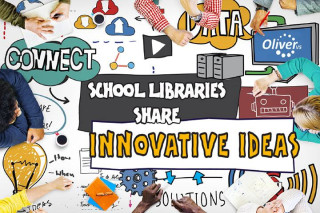- Your School Type
- Solutions
- Resources
- Blog
- Events
- More
- Contact Us
- Book a Demo
- Get a Quote

School library staff are innovators. They often lead the charge in introducing new technology to students, stay informed about current trends, come up with creative ideas to support learning and encourage reading, and find creative ways to stretch their budget further.
In the 2016 Australian and New Zealand School Library Survey respondents were encouraged to share innovative practices they had implemented in their school library. While we have produced several global features and completed two more survey’s since 2016, many of the ideas shared in the feature document are still very relevant, so we’re bringing it back!
It was inspiring to read the fantastic ideas that were shared and we are excited to be able to present some of these in this paper. We hope you enjoy reading through the responses as much as we did.
A summary of the ideas, is included below. To download the full whitepaper, click here.
In 2016, the library space was being reimagined. Librarians were finding creative ways to open their library up, promote the library and the books they have available, and provide an inviting and exciting place for students to visit.
When we opened our library last term we made a “shelfie” booth.
Students had their photo taken with the first book they took out of the library - this became our first display.
It was quick way to get their voice and presence into the space.
Collaborating with teachers to support learning and aligning resources with curriculum was, and is, an important part of the librarians role. School library staff shared ideas about how they have helped create lesson plans, worked with teachers to teach literacy, research and digital literacy skills, and support subject areas school-wide.
I run a library website that provides students and teachers with resources that have been chosen to align with their curriculum needs.
Engaging students and encouraging reluctant readers has always been a priority and a challenge for school library staff. 2016 respondents shared some fantastic ideas that have been successful in improving student engagement and encouraging reading for pleasure.
We have “The Little GGHS Library Loyalty Card”. This is working extremely well.
Girls get a stamp for each book they read. After 10 books they get a little reward.
School library staff are constantly looking for ways to use technology to enhance library services and improve learning outcomes.
Some respondents focussed on the benefits of improving the integration of digital resources with the library system, such as Federated Search, embedded videos and eBook lending, while the delivery of Makerspaces, Code Clubs and STEM programs also featured heavily in the responses.
I try to lead the way in introducing digital technologies into the curriculum. I help run CodeClub and we have a collection of robots which I also run lessons on.
Resource and collection management was, and remains, an important service for school libraries and, in 2016, library staff were exploring new methods that make it easier for students to locate books.
There was a definite trend towards genrefication in school libraries with survey participants discussing the positive responses they have seen in their school communities.
We have genrefied our fiction and non-fiction collections and the increase in borrowing and browsing books has been incredible, especially for non-fiction.
Tying in to the earlier theme of student engagement, librarians were looking at formalising and extending “read aloud” activities by adopting models such as the “Drop-Everything-And-Read” (DEAR) program, letting children and other teachers have input in to reading programs, and also involving families.
I have found that a program where older children conduct storytime at lunch is going really well.
In 2016, 48% of survey respondents felt that their school library was not adequately funded. Unfortunately in 2018 this statistic was even higher with 62% of respondents reporting that they didn’t think their school library was adequately funded. What the comments from 2016 respondents indicated though is that limited finances have become a source of inspired invention, with respondents sharing innovative ways that they have worked within a limited budget.
We are involved in sharing resources through a network of other school libraries.
Respondents recognised that mental and physical wellbeing has long-term benefits in terms of student performance and social development. In response, they were diversifying the range of activities on offer through the school library to improve the wellbeing of all students, but especially those who need additional support.
We have taught the students that reading a book for 6 minutes can relieve their stress levels by 68%.
Are you a current Oliver v5 user? We included some of the great ways you can use Oliver v5 to engage your school community.